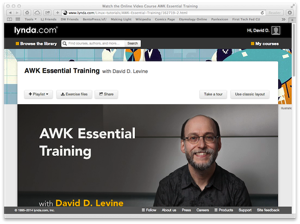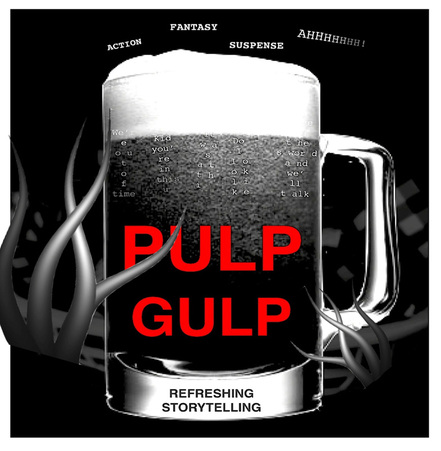When I visited video training company lynda.com in April to record AWK Essential Training, I finished up my work early. As it happens, Lynda has a series of brief “Insights” courses in which professionals in various fields talk about their careers and offer, well, insights, and they asked me to record one of those in the remaining time. That course just launched today, and is now available to all lynda.com members: Insights from David D. Levine, Writer, Designer, and Engineer. If you aren’t a member, you can watch three of the videos in the course for free at http://www.lynda.com/Developer-Documentaries-tutorials/Insights-from-David-D-Levine-Writer-Designer-Engineer/169618-2.html.
 Here’s Lynda’s description of the course: “David D. Levine has worn many hats in his long career: technical writer, interaction designer, software engineer, and award-winning science fiction author. His career path, with its ups, downs, and redirections, mirrors the one many job seekers find themselves on today. Find out how he turned a BA in architecture into a technical writing career, and, a decade later, transformed himself into an interaction designer and, finally, a software engineer. And see how, even after his retirement, he found ways to use his technical background to write science fiction stories. This course breaks down the different stages in David’s career into sections where he answers questions and offers hard-won advice to job hunters. Dive in and get insights from an expert—in more than one industry!”
Here’s Lynda’s description of the course: “David D. Levine has worn many hats in his long career: technical writer, interaction designer, software engineer, and award-winning science fiction author. His career path, with its ups, downs, and redirections, mirrors the one many job seekers find themselves on today. Find out how he turned a BA in architecture into a technical writing career, and, a decade later, transformed himself into an interaction designer and, finally, a software engineer. And see how, even after his retirement, he found ways to use his technical background to write science fiction stories. This course breaks down the different stages in David’s career into sections where he answers questions and offers hard-won advice to job hunters. Dive in and get insights from an expert—in more than one industry!”
Topics covered in the course include:
- How do you think science fiction relates to today’s technology?
- Has writing science fiction shaped your technical career?
- Has your technical career shaped your science fiction?
- What advice can you offer aspiring writers?
- What are the three top rules for successful user interaction design?
- If someone wanted to be an interaction designer, what should they do to prepare?
- What was the upside of being a user interaction designer?
- What advice can you offer an aspiring interaction designer?
- What lessons did you learn from being a user interaction designer?
- Do you have any insights on disruptive technology?
- Working on supercomputers at Intel, did you give any thought to Moore’s law?
- What skills or experience were most helpful to you when you started at Intel?
- What lessons did you learn from being a software engineer?
- How is technical writing different than writing science fiction?
- What skills are most valuable to being a technical writer?
- What lessons did you learn from being a technical writer?
This course is different from the AWK course, which is my voice over a movie of my computer screen; this one is just me, talking to the camera. So if you want to find out what I look and sound like, as well as some of the things I’ve learned in my patchwork career, this is your chance.
 Topics covered in the course include:
Topics covered in the course include:

Recent Comments